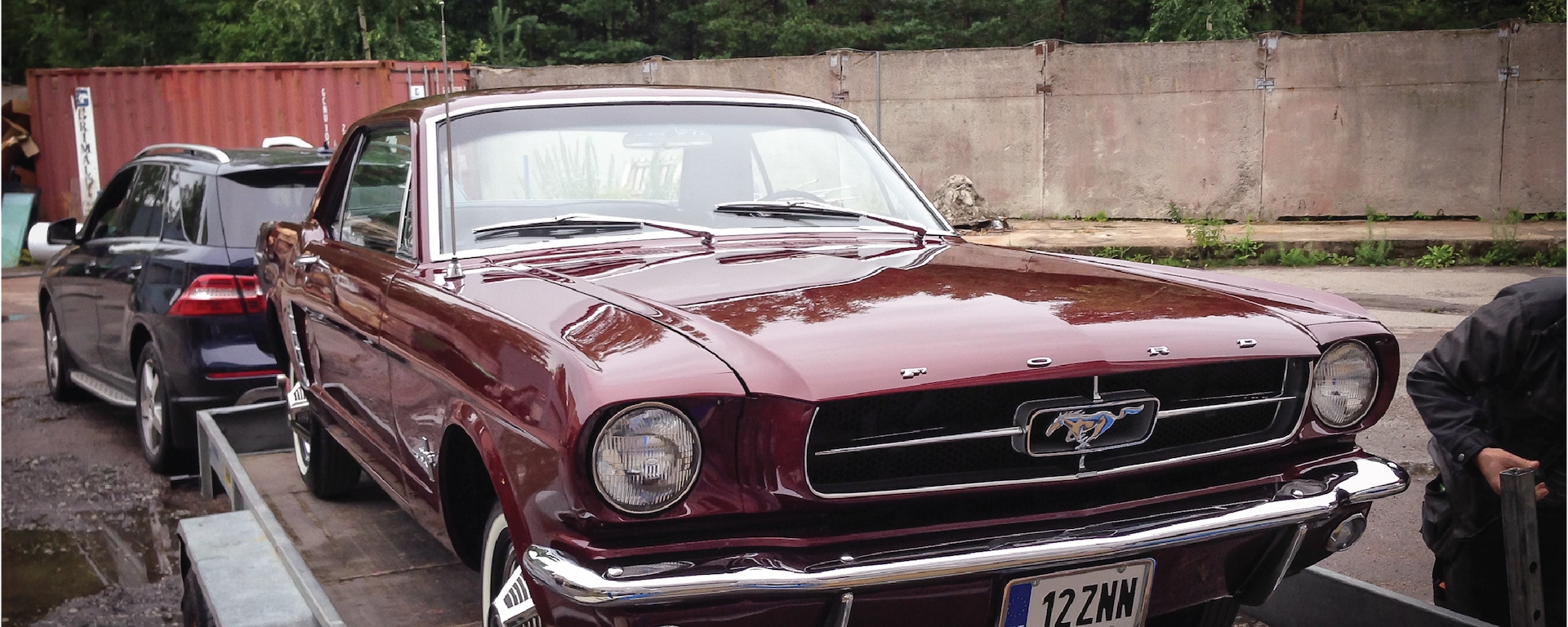
1965
Complete Restoration
Finished
What makes this Mustang project particularly interesting is the owner’s commitment to authenticity. The car has an inline-6 engine and no power steering, making it a so-called “student model,” but its charm lies precisely in that simplicity. No frills — just the kind of car Ford originally envisioned: simple, attractive, and affordable for a new generation that no longer wanted to cruise across America in six-meter-long land yachts.
The car’s history has been complicated. It had already been restored in Estonia and looked reasonably good. However, before completing the car, the owner turned to us as specialists, having doubts about the paint quality. Odd bumps had appeared here and there on the body. Unfortunately, his concerns proved true — and even worse. Upon closer inspection, we discovered that both the front and rear of the car were warped due to a past accident, the doors didn’t fit, and the driver-side fender was also bent. The rear wings and panel were practically built from filler.
After thoroughly examining the car with us, the owner made a difficult decision: everything would have to be redone from scratch. What followed was hundreds of hours of stripping the old paint, straightening the car in a Car-O-Liner body jig, installing a new rear panel and doors, and repairing the front end along with all wings and fenders. Finally, we removed the “old” paint from the roof, hood, and trunk using soda blasting — which revealed even more surprises. The edges of the rear window had through-holes filled with filler, and the hood looked like a volcanic landscape.
The takeaway? Restoring a car costs a lot of money, and if it’s done poorly, that money is wasted. The main problem is that the person doing the work often does not approach the body repair process as a complete, structural procedure. When a car isn’t repaired structurally and thoughtfully, the painter has to start straightening a warped body with filler — and nothing durable or worthwhile comes from that. Moral of the story: leave this work to experts. A price that seems high at first is ultimately far cheaper than having to rebuild the same car twice.
The Estonian owner has commissioned us to carry out the entire restoration, including reassembly and mechanical work. We are confident we can manage this successfully using the best specialists and parts suppliers from Estonia, Finland, and Sweden for components outside our area of expertise. Consolidating the main restoration work — the body repair — under one contractor makes sense, as it shortens logistics, keeps parts and components organized, and ensures a single company is responsible for the entire process.
One interesting fact: the owner believed the car had originally been black because that was how it was painted by a previous restorer. However, after carefully researching the car’s history and factory codes, it turned out that the Mustang should actually be dark metallic red. The owner was delighted with this discovery, as plain black made the car look somewhat gloomy.
Today, the paintwork is complete: the car is back in its authentic dark metallic red, with semi-matte black on the inner surfaces and under the hood. The Standox paint system again ensured a perfect final result. Next, we will continue with the mechanical restoration and reassembly.
08 Aug 2012